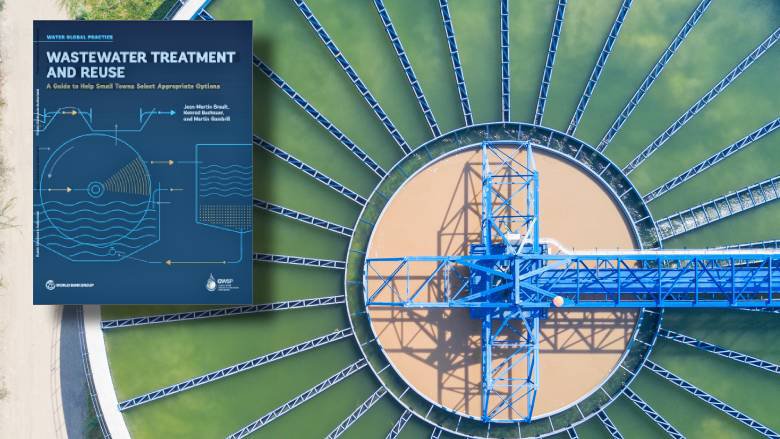Cutting-edge Methods to Waste Water Treatment Technologies
Cutting-edge Methods to Waste Water Treatment Technologies
Blog Article
Strategic Approaches to Boost Drainage Treatment Effectiveness and Minimize Environmental Effect
In the world of waste water therapy, the quest for boosted performance and decreased environmental influence is a continuous challenge that requires calculated options. The combination of advanced therapy innovations, energy-efficient processes, source recovery strategies, improved nutrient elimination techniques, and smart surveillance and control systems stands for a multifaceted structure for resolving these pushing problems.
Advanced Treatment Technologies
Sophisticated membrane layer purification systems have reinvented innovative wastewater therapy procedures, considerably improving the removal of impurities. This innovation has actually confirmed to be very efficient in removing a wide array of pollutants, including pharmaceuticals, heavy metals, and organic compounds, which are commonly testing to remove via traditional therapy methods.
Furthermore, membrane filtration systems provide numerous advantages over traditional treatment methods. They require less room, create higher-quality effluent, and are more resistant to fluctuations in influent water top quality. Additionally, these systems are very functional and can be quickly integrated right into existing therapy plants or utilized as standalone systems for decentralized applications. As the demand for clean water remains to climb, the fostering of sophisticated membrane filtration innovations is important to guarantee reliable and sustainable wastewater therapy methods.
Energy-Efficient Processes
The combination of energy-efficient procedures in wastewater therapy systems is important for maximizing resource utilization and decreasing operational costs. One essential technique to enhancing energy efficiency in wastewater therapy is the usage of innovative aeration systems, such as fine bubble diffusers or surface aerators, which can enhance oxygen transfer effectiveness and minimize power usage.
In addition, optimizing procedure control and automation through using advanced sensing units and monitoring systems can boost overall energy performance by adjusting procedures in real-time based upon actual demand and problems. Applying power audits and consistently checking power performance signs are vital methods to recognize locations for renovation and track energy-saving initiatives effectively. Generally, the adoption of energy-efficient processes in wastewater treatment not just profits the environment but additionally adds to long-lasting price financial savings and functional sustainability.
Resource Healing Techniques
With a concentrate on optimizing resource utilization and sustainability in wastewater therapy systems, the execution of resource healing techniques emerges as a pivotal facet in improving operational effectiveness. Source recovery approaches in wastewater therapy involve the recognition and extraction of beneficial sources from the waste stream, thus transforming what was as soon as considered waste right into a useful possession. By carrying out resource recovery strategies such as nutrient removal and recuperation, energy generation from organic issue, and the production of multiple-use water, wastewater treatment plants can decrease ecological influence while making the most of efficiency.

Improved Nutrient Elimination Methods
Applying innovative nutrient removal techniques is vital for maximizing the performance of wastewater treatment systems. Enhanced nutrient elimination plays a critical duty in reducing the ecological influence of treated effluent discharged right into water bodies. Among the key techniques made use of for improved nutrient elimination is the procedure of organic nutrient elimination (BNR), which includes the removal of nitrogen and phosphorus via biological processes. This can be attained via using specialized microorganisms that can transform nitrogen compounds into inert nitrogen gas with denitrification, and collect phosphorus within their cells through a procedure called improved organic phosphorus removal (EBPR)

Along with BNR, progressed treatment approaches such as membrane layer bioreactors (MBRs) and constructed marshes can also be utilized to improve nutrient removal efficiency. MBRs use membrane layers to attain premium effluent criteria by effectively eliminating nutrients and put on hold solids. Created wetlands mimic all-natural marsh processes to remove nutrients with plant uptake, microbial task, and sedimentation. By incorporating these sophisticated nutrient elimination strategies right into wastewater treatment markets, districts and systems can effectively reduce nutrient air pollution and safeguard the atmosphere.
Smart Surveillance and Control Equipment
Using innovative modern technology, the combination of clever surveillance and control systems changes the operational efficiency of wastewater therapy facilities. These systems incorporate advanced sensors and information analytics to constantly keep an eye on essential parameters such as pH degrees, turbidity, dissolved oxygen, and circulation link rates in real-time. By accumulating and examining this information, operators can acquire beneficial understandings into the efficiency of the treatment processes, allowing proactive adjustments to optimize treatment performance.
Smart tracking and control systems also support remote monitoring abilities, enabling drivers to access real-time information and control functions from off-site places. This remote ease of access boosts operational adaptability and responsiveness, enabling quick interventions in instance of system malfunctions or changes in influent quality. The anticipating upkeep capabilities of these systems aid avoid devices failings and minimize downtime, ultimately improving the general integrity of wastewater therapy procedures.
Conclusion
Finally, calculated methods such as advanced therapy modern technologies, energy-efficient processes, resource recuperation methods, boosted nutrient elimination techniques, and smart monitoring and control systems play a critical function in improving wastewater therapy performance and decreasing ecological influence. By executing these methods, wastewater therapy plants can boost their total efficiency, minimize power intake, recover valuable resources, and ensure compliance with environmental guidelines. These techniques are essential for reliable my link and lasting wastewater monitoring techniques.

In conclusion, critical methods such as advanced treatment technologies, energy-efficient processes, source recovery methods, enhanced nutrient elimination techniques, and wise surveillance and control systems play a crucial function in boosting wastewater treatment performance and reducing ecological impact.
Report this page